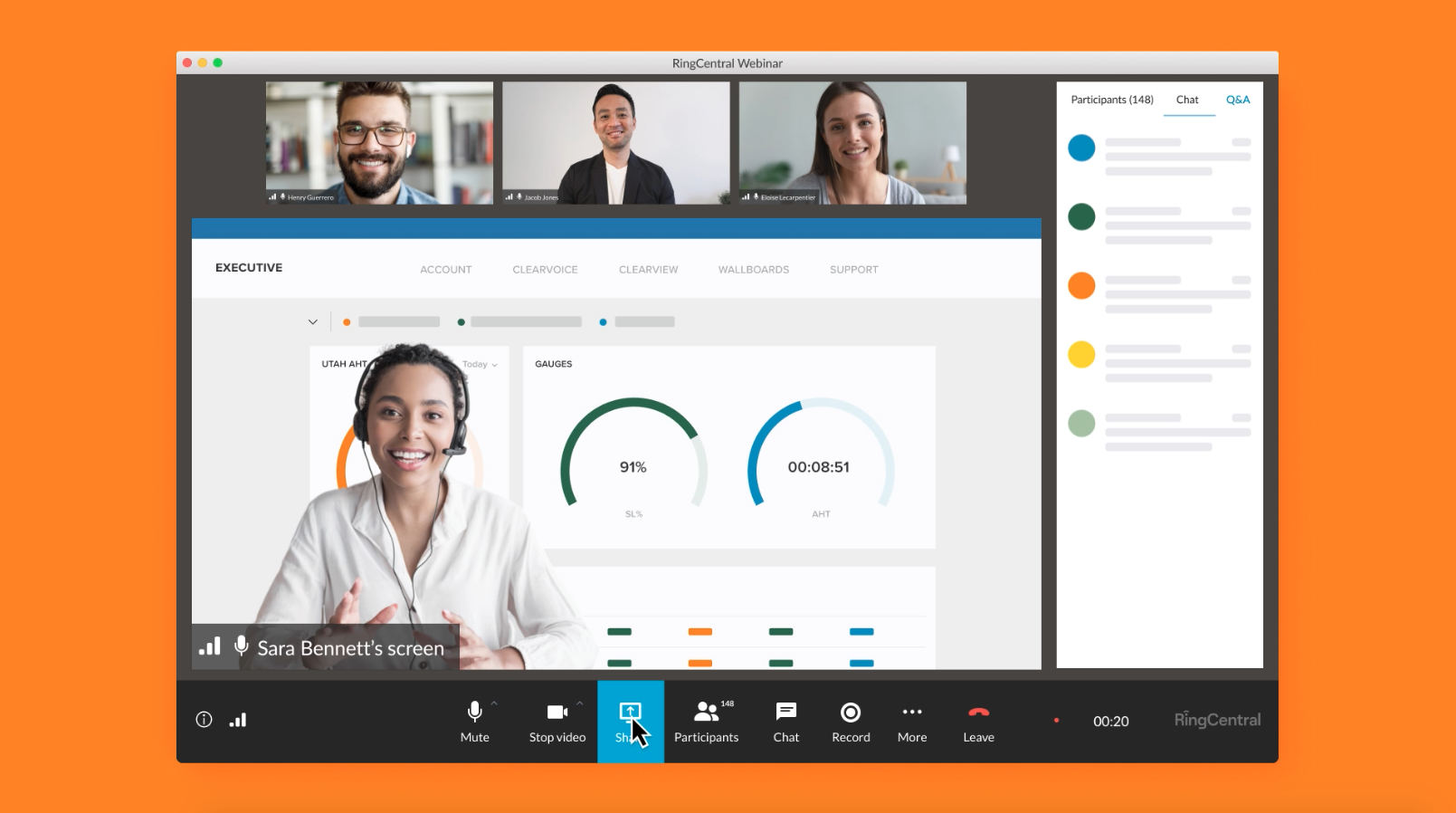It wasn’t long ago that collaboration meant huddling together in an office with your colleagues to hammer out a business plan. When work technology was still centered around emails and intranets, remote work was the last thing on businesses’ minds. That’s all changing faster than ever before.
Recent major advancements in communications technology and internet reliability have made remote work not only possible, but popular too. Between 2005 and 2017, remote work grew by an incredible 159%. What’s more, in just the last 10 years, 83% of businesses have adopted or plan to adopt a flexible work policy.
Collaboration is more than simply reaching across the table now—it’s reaching across the city, state, time zones, and the world. And video has a vital role to play. Here’s why:
Voice and messaging alone aren’t enough. Communication needs nonverbal cues.
Consider that two colleagues, Jane and Alice, are on a phone call discussing a project together, and Jane presents her ideas for theory, execution, and predicted results. After her presentation, Jane asks Alice what she thinks.
Alice says: “I love your idea.”
What Jane doesn’t know is that Alice was secretly ambivalent. But how could Jane tell? As far as she’s concerned, Alice honestly liked her idea. At the same time, Alice is too shy to speak up—something we see quite often in the workplace.
Studies show that 93% of communication comes from nonverbal cues, with only 7% of what we mean actually expressed through words. Here’s the problem: organizations are still heavily reliant on voice, messages, and emails as their main sources of communication. These forms of communication aren’t adequate for expressing how colleagues really feel, which hinders productivity in the long run.
Video enables us to communicate with and understand colleagues.
Remote workers comprise around 3.4% of the total US workforce and that number increases every year. That means we’ll be communicating and collaborating with colleagues using technology more and more. Text is simply not going to cut it.
Instead, video meetings are the best alternatives to in-person interactions. Video allows us to see and be seen, which helps us develop stronger relationships with our colleagues that we don’t see often (or at all). It also simulates random encounters in the office—an important part of developing bonds with our colleagues. Remember the last time a conversation was struck up by walking past a coworker’s desk? Businesses can facilitate those interactions by making video a regular part of a remote employee’s day, such as randomized coffee breaks using video meetings.
In project meetings, video allows us to pick up on nonverbal cues that give context to communications with coworkers—an advantage that voice, messages, and emails lack. We’ll also be able to retain information much better when we can see our fellow participants. At the same time, when they screen share, we get a glimpse into their workflow/thought processes.
To get your teams to adopt video, it has to be effortless to use.
When your organization decides to implement a new video meeting solution, getting employees to fully embrace video is going to be the biggest challenge. After all, sending messages, writing emails, and making calls are all pretty easy. Why would they break those habits?
In order to change their behavior, your video meeting solution has to be effortless from start to finish. Imagine if two colleagues working remotely wanted to start a video call. They’d have to download an app, install the software, register for an account, enter meeting credentials, and so on. If it takes 10 minutes just to set up any kind of meeting, no one’s going to use it.
If we want the same level of communication and collaboration in an increasingly remote workforce, starting a video call needs to be as easy as opening our mouths to speak with colleagues and friends.
Your video meeting platform should be able to:
- Start and join video calls easily with just the click of a button.
- Support different types of meetings from one-on-ones to large discussion groups.
- Integrate calendars to easily see, join, and schedule meetings.
- Allow participants to join without requiring any downloads or credentials.
- Share screens with an option for participants to annotate.
Drive video meeting adoption by combining messaging and calling.
Making video meetings easier to use is just half of the equation. Imagine you’re invited to a project launch meeting, but the invitation has no information attached to it. Instead, you take time out of your other tasks to fish around for information from the host and coworkers. Or if you’re too busy, you go into the meeting blind. That makes for a poor meeting experience.
Video meetings should come with context so employees can be fully prepared, and that starts with a single platform for messaging, video, and voice meetings. For example, if you’re in a group messaging discussion with your project teammates, chances are there’s an ongoing conversation with an entire discussion history—files, links, and other media included—about the project. When you get an invitation to the meeting, all you’d have to do is find the group discussion to get the latest updates. Accessing the context is not only effortless, but more importantly, you don’t lose any information when your entire communications live on the same platform.
Be fully prepared for today’s remote workforce—and tomorrow’s.
Facilitating communication in an era of unprecedented remote work can be daunting, but not impossible—as long as your teams have the proper technology. By integrating video meetings into your communications architecture or, even better, selecting an integrated platform that supports messaging, video, and phone, you’re ready to collaborate with colleagues wherever they are.
And by becoming a video-first organization, you’re fully ready to embrace an increasingly remote workforce.
Learn how RingCentral Video makes meetings as easy as face-to-face interactions. Also, check out Video-First At Work to see how you can make video the heart of your business.
Originally published Apr 08, 2020, updated Jul 25, 2024



